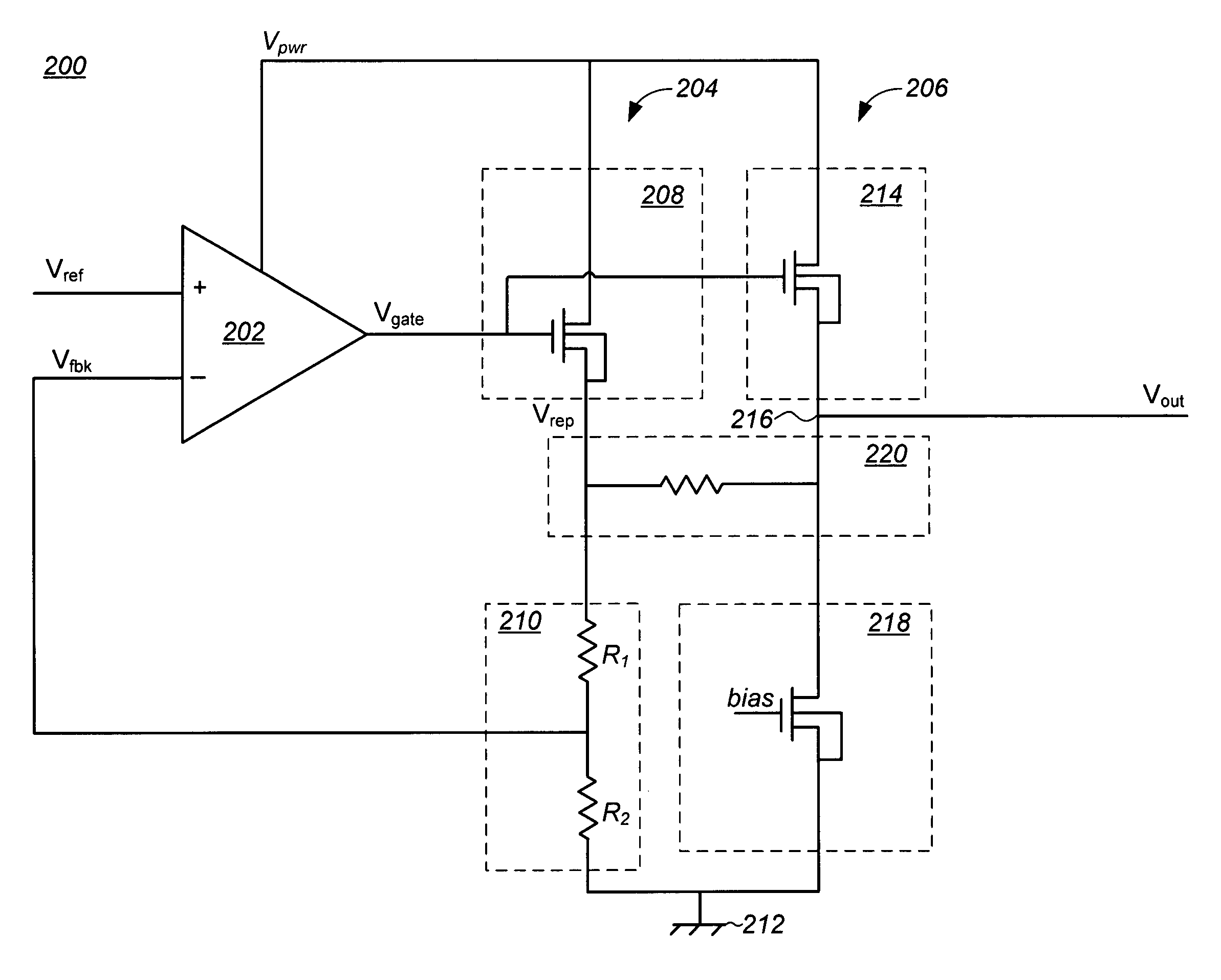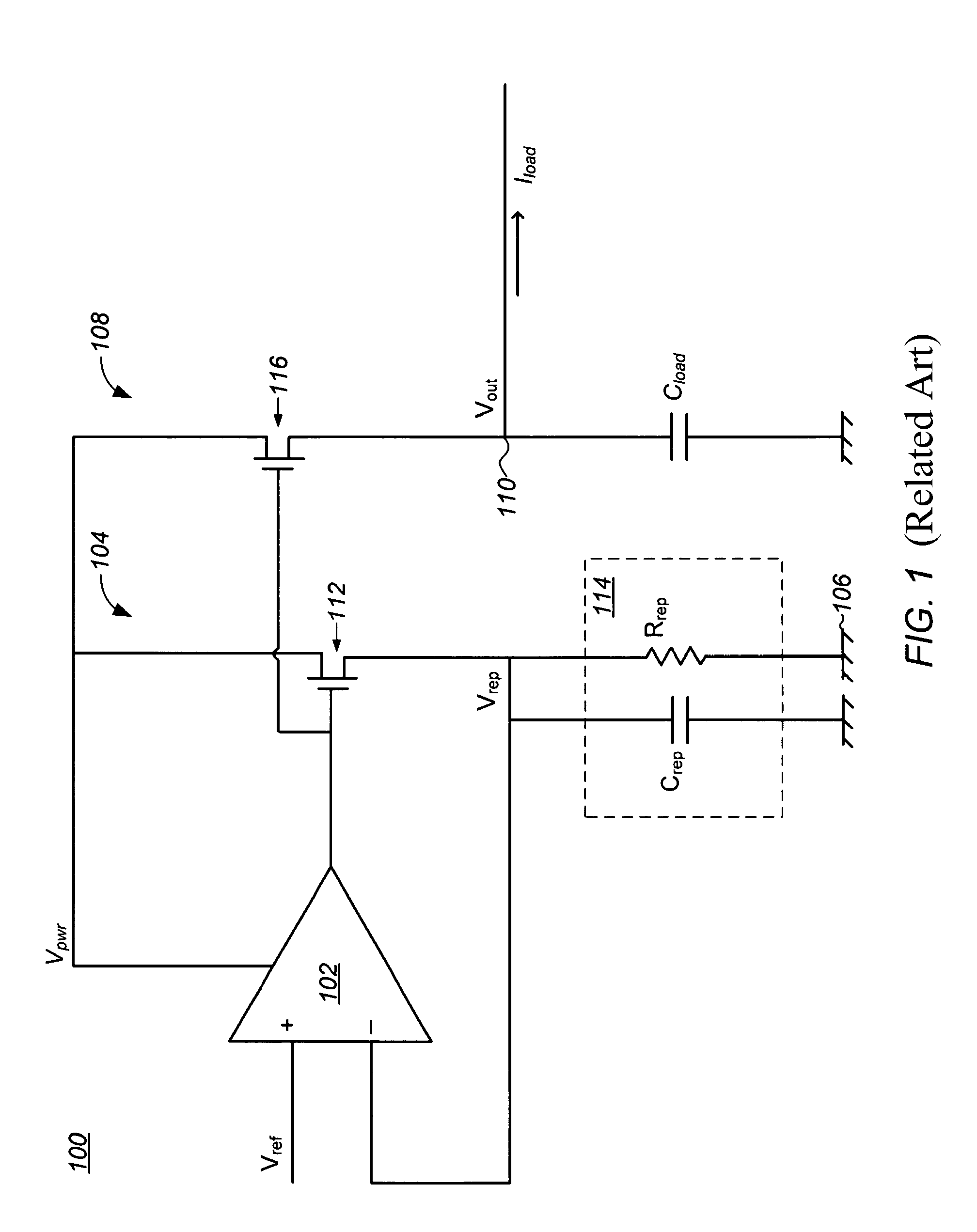Replica transistor voltage regulator
a transistor voltage regulator and replica technology, applied in the field of voltage regulators, can solve the problems of poor accuracy of conventional replica transistor voltage regulators, unsuitable for many circuits, and not wholly satisfactory, and achieve the effects of improving accuracy, improving power supply rejection ratio, and improving stability of feedback circuits
- Summary
- Abstract
- Description
- Claims
- Application Information
AI Technical Summary
Benefits of technology
Problems solved by technology
Method used
Image
Examples
Embodiment Construction
[0019]The present invention is directed to a replica transistor voltage regulator having a feedback loop between sources of an output source follower and a replica source follower.
[0020]The voltage regulator and method of the present invention are particularly useful in battery operated devices, such as a wireless computer mouse and other like devices, which include integrated voltage regulators fabricated on a common semiconductor die or substrate with integrated circuits (ICs) of the devices.
[0021]In the following description, for purposes of explanation, numerous specific details are set forth in order to provide a thorough understanding of the present invention. It will be evident, however, to one skilled in the art that the present invention may be practiced without these specific details. In other instances, well-known structures, and techniques are not shown in detail or are shown in block diagram form in order to avoid unnecessarily obscuring an understanding of this descrip...
PUM
 Login to View More
Login to View More Abstract
Description
Claims
Application Information
 Login to View More
Login to View More - R&D
- Intellectual Property
- Life Sciences
- Materials
- Tech Scout
- Unparalleled Data Quality
- Higher Quality Content
- 60% Fewer Hallucinations
Browse by: Latest US Patents, China's latest patents, Technical Efficacy Thesaurus, Application Domain, Technology Topic, Popular Technical Reports.
© 2025 PatSnap. All rights reserved.Legal|Privacy policy|Modern Slavery Act Transparency Statement|Sitemap|About US| Contact US: help@patsnap.com



